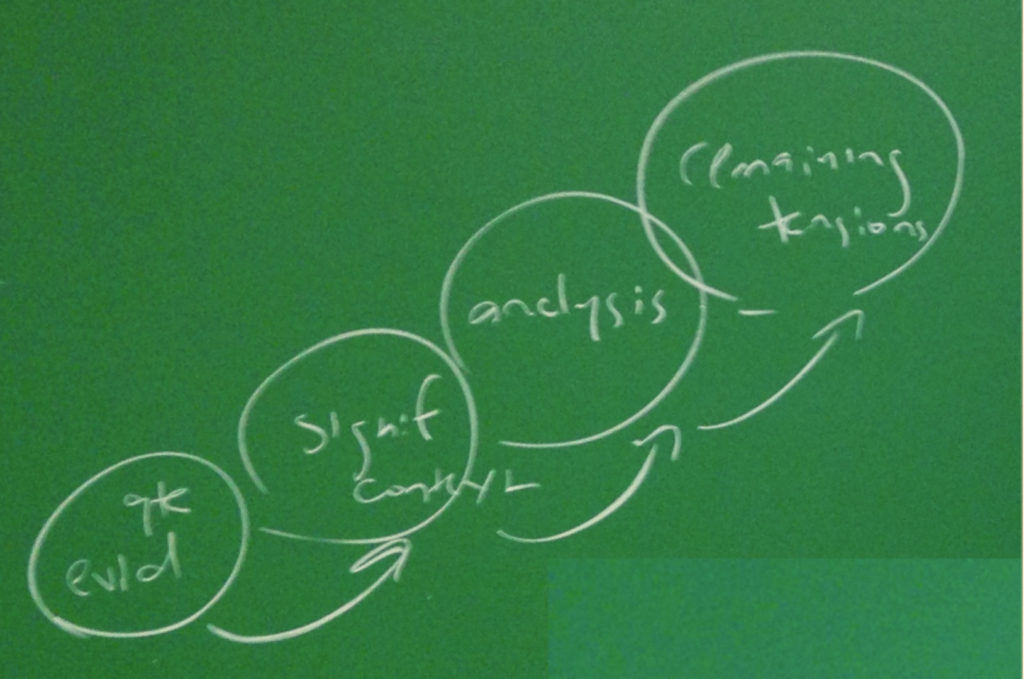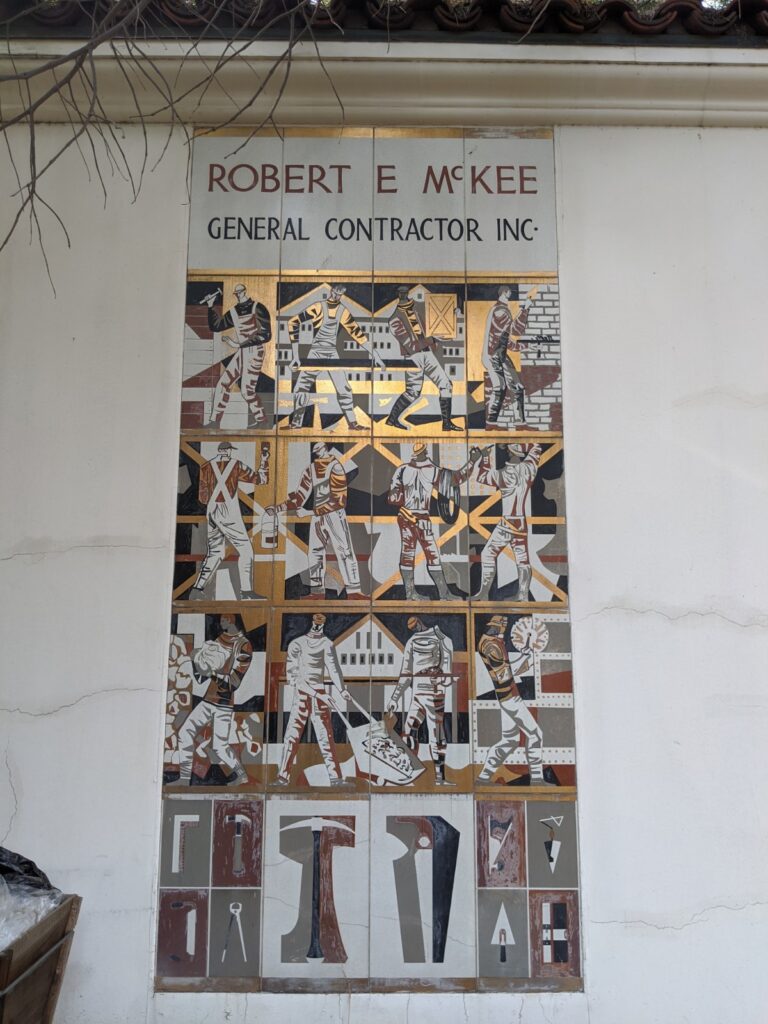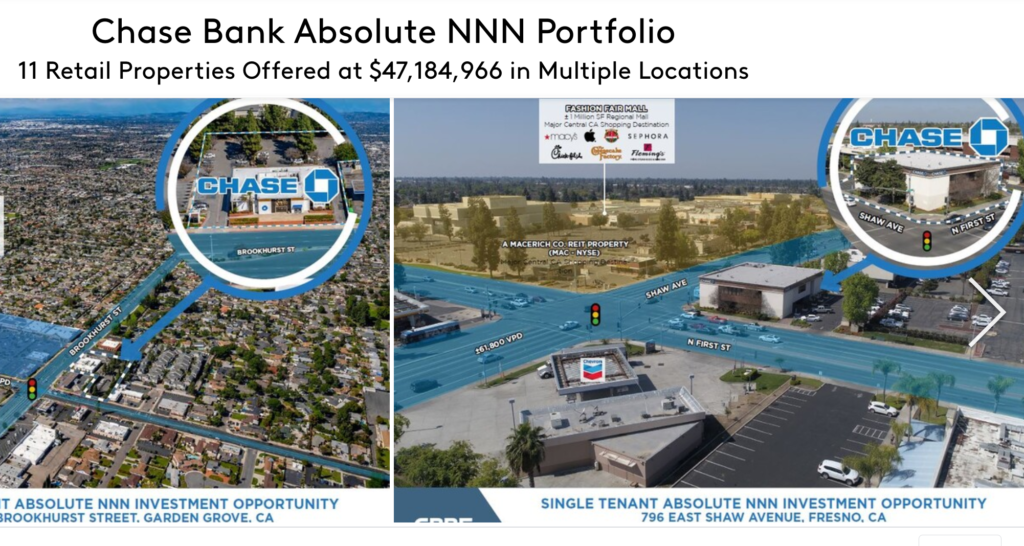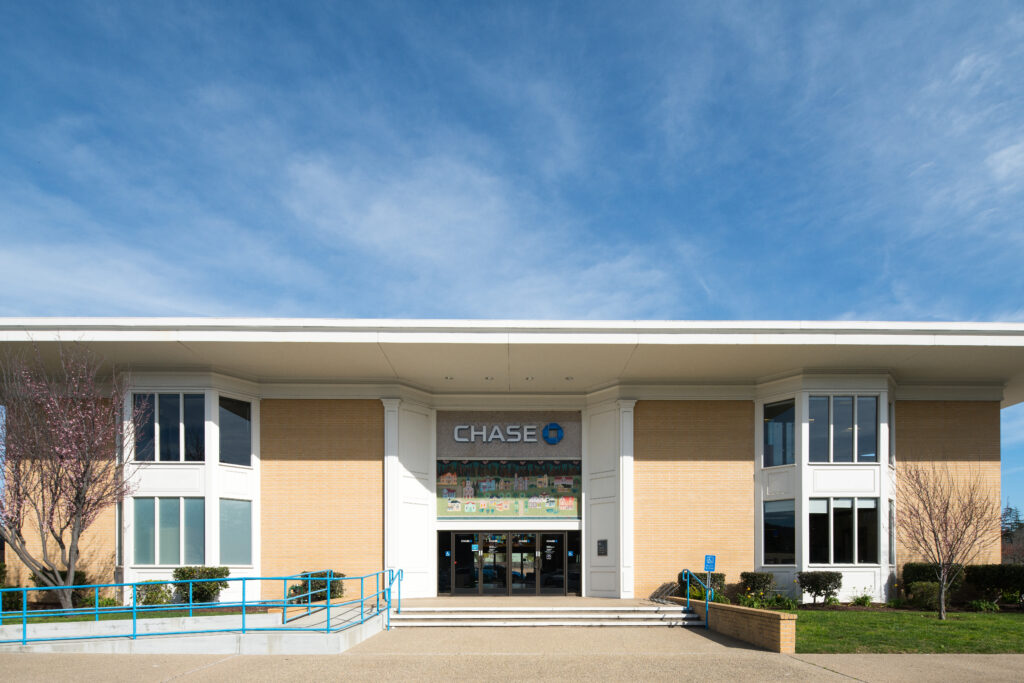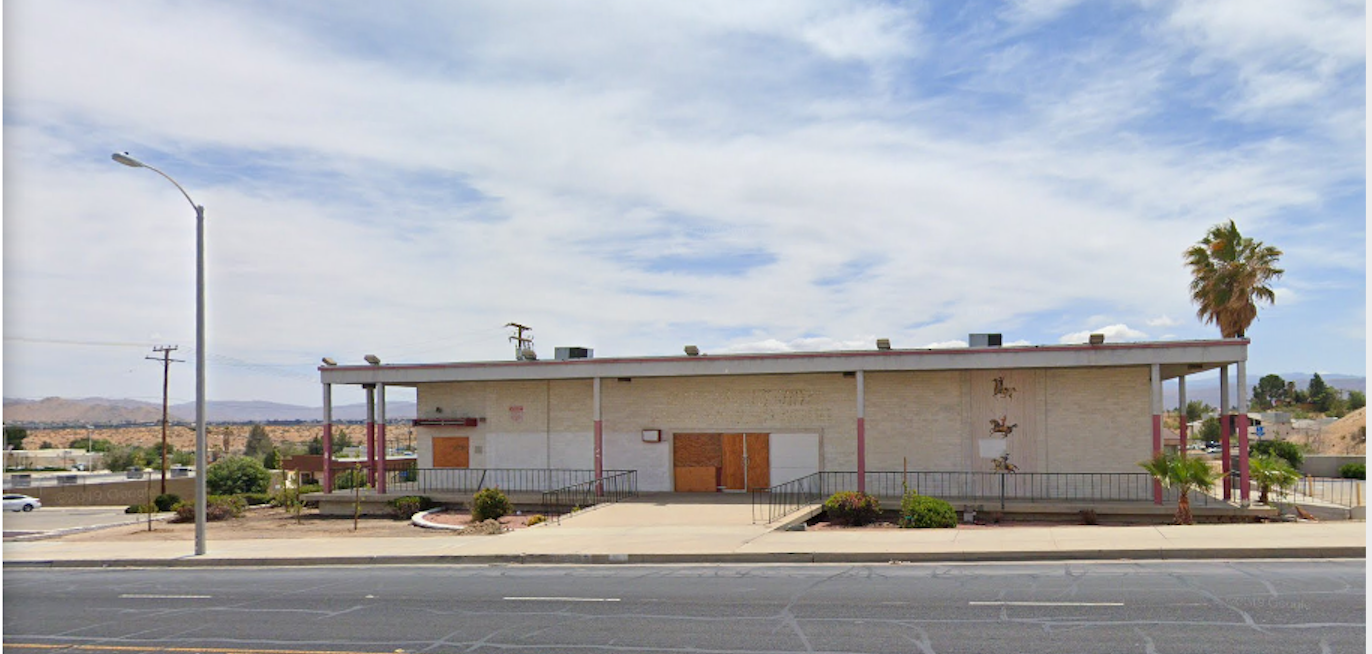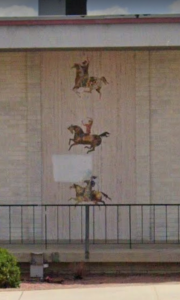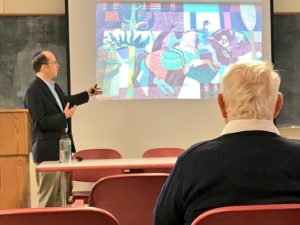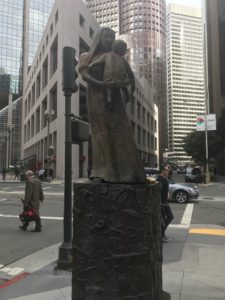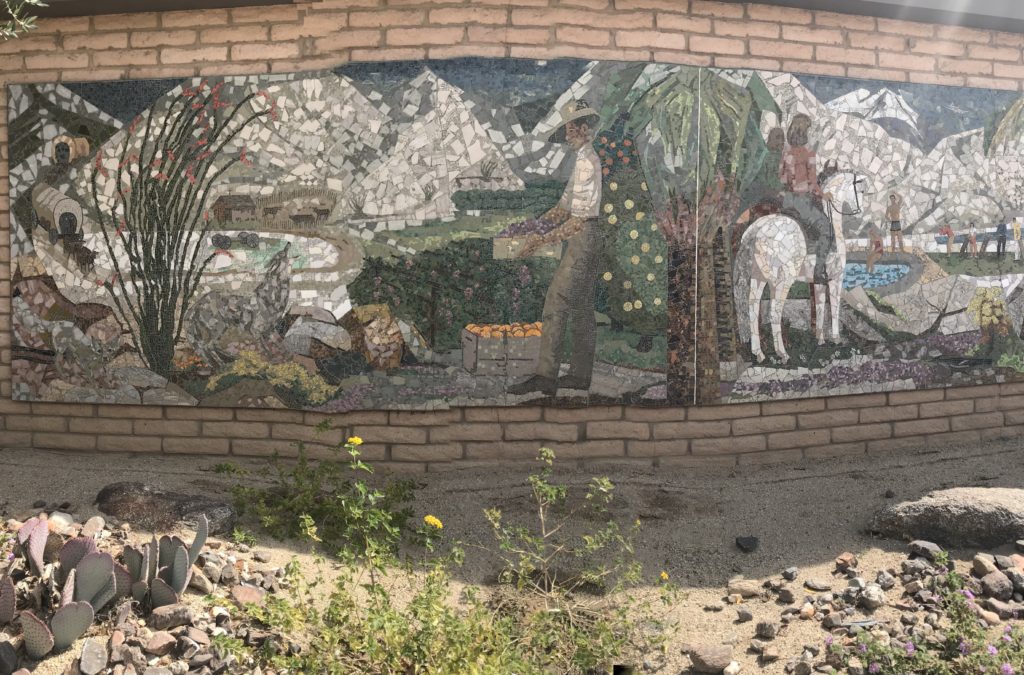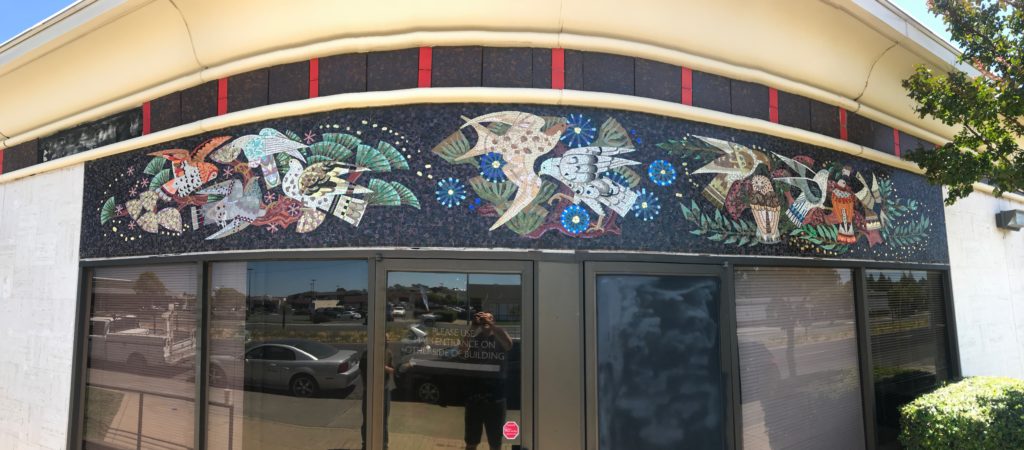Depth of Analysis: Centrifuges to Refine Student Writing
What does a centrifuge do?
That’s the question I ask, in the first week of every course I teach, as I introduce this writing model. Sometimes the science majors perk up—the first question, in this required class seemingly far outside their major, speaks directly to their interests.
A centrifuge spins round and round, they often answer. A detail. OK, but why? I ask. A pause, and then a better answer: to separate things. Even better: To refine them.
Then the conversation gets radioactive.
What process uses a chain of centrifuges? Uranium enrichment, from less than one percent U-235 to a few percentage points, up to a nuclear-grade concentration of twenty percent—that is the work of centrifuges, spinning and separating, the product of one round of refinement pushed even farther in the next.
I draw four ovals on the board, in an ascending series, the line looping from one to the next. Week in and week out we will practice, I explain; the iterative process is its own form of refinement.
My centrifuge model of reading response papers builds upon this analogy: that students can purify, and refine, and deepen their analysis over the course of four paragraphs, with a model that can work as a rhetorical frame in any course.
The four paragraphs I require are:
Detail. Pick one telling detail from the night’s reading. If you can quote it and properly cite it, even better. But just one—not a list of key points, not a summary. (This paragraph tends to be easy points. Unless they summarize.)
Significance. Explain how the telling detail reveals something that will be important to our class discussion, ideally on the day it is due, but perhaps some time in this unit or this semester. Why does this detail matter? (As even a keyword identification can reveal, getting the significance right is hard, but I do offer half credit at times.)
Implications. This is where I ask students to stretch. How might this little detail be a “little door”* into a controversial theory, or a moment of insight? How far can you take the significance of that detail? What multitudes may be hiding inside? The more passionate the claim the better. (If the students love a good rant, this gets easier—though many are unaccustomed to placing their own arguments and opinions so prominently in a paper, even one asking for their personal response.)
Remaining Tensions. An argument, filled with implications, is an accomplishment, I explain. But to be able to identify the gaps in that arguments, the items that a rant might overlook, the countervailing pressures and tensions left unresolved, the acknowledgment of humility—that is a depth of analysis, a sophistication in thinking, that only the best writing assignments achieve. And so I am asking that they practice it, in each written response, to build up the depth and sophistication of their arguments. (These points are hard to garner, so they function almost like extra credit.)
The paragraphs can be short, or they can be pages long; some students can punch out a quality centrifuge assignment in an hour, while others complain that it takes them hours to complete. I explain from the outset that they can argue whatever they wish, about whatever detail seemed important to them; not a few find that freedom daunting. As they look at models I provide and respond to my feedback on each of the four paragraphs, they might begin frustrated, but focused: the conversation turns immediately to depth of analysis and mastery of the rhetoric, not merely recall of facts. As they master the form, they begin to talk about centrifuges as writing, the metaphor becoming their new reality.
I love grading my centrifuge assignments. I assign them after the reading and before class, so they let me know what students understand before the discussion. I always learn something, about their reading practices, their insights, and their attitudes toward the subject matter at hand. And, week after week, this iterative assignment teaches students to read closely, think deeply, stretch to the widest implications, and be able to admit what their arguments leave unresolved.
The centrifuge analogy has helped me explain to students—majors and nonmajors alike—how to find a small entry point into the week’s readings, and how to push their arguments and analysis deeper. Having the assignment iterate throughout the semester gives students a chance to learn my standards, understand the assignment, and excel as they apply its approach to new course material. I have found that it truly refines students’ thinking in written assignments—something definitely worth spinning about.
(As I write up more of my strategies for teaching student writing, you can find them here.)
——
- In his 2009 book War of a Thousand Deserts: Indian Raids and the U.S.-Mexican War, Brian DeLay calls Article XI of the Treaty of Guadalupe Hidalgo “a little door into a big story, one told only in pieces by borderlands anthropologists and historians and forgotten altogether by the broader national and international histories of the era.” (p. xv) That image—a small, almost-forgotten detail becoming transformative and opening into a wide, unexplored set of implications and tensions—has stuck with me, and it likely had a role in my developing the centrifuge assignment.
Rediscovering and Preserving more from Millard Sheets
Last week I had the pleasure, through Zoom, of attending a Los Angeles Cultural Heritage Commission hearing. I spoke in support of making the former McKee Construction Los Angeles branch office an officially recognized historical-cultural monument.
The wonderful SurveyLA project found this building–a pair of Spanish Colonial Revival buildings at the edge of a larger industrial site, on North San Fernando Road in northeast Los Angeles. Their 255-page report caught the eye of Richard Schave at Esotouric, and he let me know about this line:
“Adjacent to the entrance is a large mural purportedly by Millard Sheets that faces south and spans the full height of the building. Commissioned by the building’s former tenant, a general contracting company, this mural depicts various themes in building construction and features the former tenant’s name: ‘ROBERT E. MCKEE GENERAL CONTRACTOR INC.'” (page 59)
(Fun fact for me: McKee was born in St. Louis and ran his nationwide construction business from El Paso, and his firm built many iconic buildings in Los Angeles, including LA’s Union Station, LAX, and Arco Plaza–what a history! A local El Paso historian has written it up here.)
Careful students of the Millard Sheets Studio may have all the same questions and thoughts I had–recognizing McKee as the contractor on the Los Angeles Scottish Rite Temple, with a similar full-height tableau, depicting themes in Masonic history; the vignettes of building trades on the front of the Compton branch of Home Savings, as designed by Tom Van Sant and Millard Sheets; and the talk of the artwork as a mural–which type?
At the hearing, I learned the mural is from 1961–the year that the Scottish Rite Temple and four Home Savings branches were finished, and a period when murals (in this case painted on ceramic tiles, likely from from Gladding McBean) received attention from Millard Sheets, and at least one of the primary assistants at that time: Martha Menke Underwood; Susan Hertel; Nancy Colbath; or, at the end of the year, the newly arrived Denis O’Connor.
While the style doesn’t look like Millard Sheets himself painted the tiles, it looks to me like Sheets did the initial design and then someone else fabricated it–as we see in the earliest mosaics, fabricated by Ravenna in St. Louis, or in the stained glass. The Masonic symbolism and the images of construction look familiar from Compton and the Masonic halls in LA and San Francisco. In this case, the artist wasn’t as tightly tied to Sheets’s style as Sue Hertel generally was–but, as Lillian Sizemore suggested to me, the style may evoke more of what we have seen from Jean and Arthur Ames, so maybe it was one of the many joint Ames-Sheets students in the Millard Sheets Studio.
The Millard Sheets Studio ramped up long before their recordkeeping kept pace, so unfortunately the Millard Sheets Papers at the Smithsonian don’t have a file for the project, and it doesn’t seem listed on the resumes Millard Sheets used as a running list of his projects before around 1962. So it is not yet listed on my “Definitive List.” But that makes it so much more exciting to find, and to see preserved!
The building owners and the LA Cultural Heritage Commission were in agreement about the importance of the building and the mural.
And the preservation threat in Pacific Beach got front-page-local-section coverage from the San Diego Union-Tribune:
Nice to see more coverage in @UTSanDiego! My first photo in the hometown paper… pic.twitter.com/VN1pBAQ8TZ
— Adam Arenson (@adamarenson) August 11, 2020
I hope that the other works needing preservation or just more care–Sacramento, Compton, Victorville, and beyond–can see such concerted community efforts as well!
At least 12 Home Savings properties slated for sale or demolition
CBRE, which manages the commercial lease on many of the former Home Savings properties (those sold, once upon a time, to Met Life and rented back by Home Savings, Washington Mutual, and now JP Morgan Chase) has listed 11 of these properties for sale:
My sense is that JP Morgan Chase is staying as a tenant, but it would be a useful time for those in San Francisco, Garden Grove, Sacramento, San Bernardino, and Santa Cruz, in particular, to emphasize the importance of this art and architecture in their community, and to push for its preservation.
In separate news, a second Sacramento branch, in the Arden area, has been slated for demolition; I hope that Arden Way Arcade, Sacramento Modern, and supporters from around the state can advocate for its preservation.

Millard Sheets Studio, Arden Way, Sacramento, 1978; detail of mosaic.
For these and more properties, be sure to check the Definitive List for information about artists and dates.
Please keep me posted about any further developments, and ways that I can help.
Millard Sheets Studio Art and Architecture at Risk in San Diego, Compton, and Victorville
Hello everyone!
I have recently learned about three Home Savings locations for sale or under demolition plans, so I wanted to blog about these locations so we can advocate for these buildings, or help make sure that the art can be saved and preserved, ideally in the community.

Sheets Studio, Pacific Beach, Zoo, 1977 — one of the mosaics threatened with removal
I am aware of three current challenges: the Pacific Beach branch in San Diego; and empty buildings in Compton and Victorville. Please let me know of any others you find.
San Diego
As I have written before in my book and on this blog, the landmark branch of my hometown holds eight mosaics, showing key figures in the history of San Diego–Native Americans, Spanish friars and vaqueros, a 49er, and members of the fishing and construction trades–as well as loving images of the San Diego Children’s Zoo in Balboa Park and the pleasures of San Diego Harbor, including the Point Loma lighthouse, the Star of India, and Sea World.

Sheets Studio, Pacific Beach, “The Harbor,” 1977
There is also a sculpture of a sea lion and an interior mural similar to the one destroyed in San Francisco in 2008.
Chase Bank has told the California Coastal Commission that they plan to demolish this location, so I am urging the Commission, who has oversight so near Mission Bay, to ensure that the artwork is preserved and relocated. (Brian Worley, who worked extensively with Millard Sheets in the Studio, has done marvelous work recovering the artwork from the Santa Monica branch that is being demolished now.) I am reaching out to local museums and historical groups, but advice welcomed!
Compton
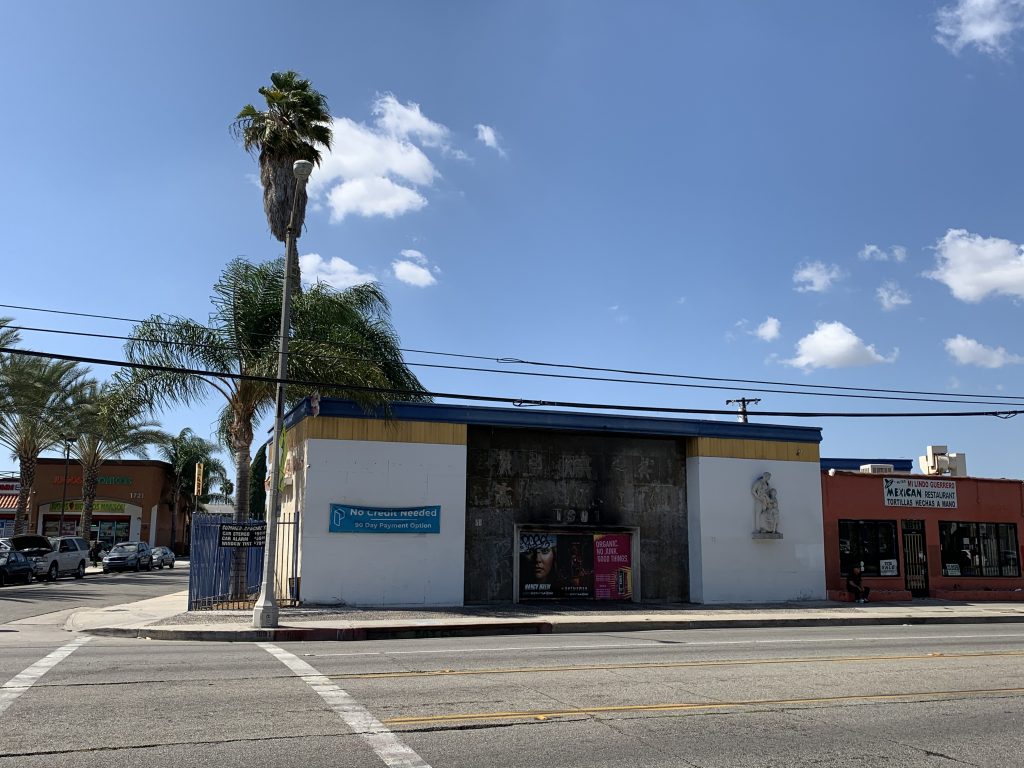
Millard Sheets Studio, Compton branch for Home Savings, completed 1958. Photography by Michael Iwinski, 2019.
This building is one of the first that Millard Sheets ever designed, and the mosaics, by the noted artist Tom Van Sant, represent the (small!) beginnings of the mosaic tradition inside the studio that would blossom into iconic works throughout California and beyond. The building is empty and for sale.
The building is a car-stereo installation shop. The mosaics and sculptures on the front and the vault mosaic used to be in relatively good condition; but as Michael Iwinski told me, there has since been a fire. Apparently the City of Compton has no historic-preservation ordinance? This building is deserving of their attention.
Victorville
I also learned this week from David Shearer at Claremont Heritage that another early Home Savings branch designed by Millard Sheets, in Victorville, is empty and for sale. It seems to have been Active Mobility Center before they moved.
This building has Millard Sheets Studio artwork from two different eras; it is unclear if the artwork is all intact, but the architecture–on an unusual sloping site–and the sculptures, interior work, and external mosaics would all have pride of place in any local museum.
Unfortunately, as the ongoing demolition of the William Pereira campus at LACMA (paid for by Howard Ahmanson, Home Savings’s owner) demonstrates, more of these situations are likely to emerge.
I hope you are helping to protect your family and community from COVID-19. While my May events have been postponed, I look forward to rescheduling them, and adding more, in the months ahead. (If you have a group that would benefit from an online presentation about Millard Sheets and his studio’s Midcentury Modern art and architecture, let me know!)
The Book’s Impact So Far: 8 Months of Updates and Awards from the Road

Two young fans of the book show it “out in the wild” of southern California. Photograph by Kim Silverstein.
Hi everyone!
I know it has been a long time since I posted on this blog — but I have been able to meet many Millard Sheets enthusiasts at book talks and other public lectures across California over the past eight months! It has been so wonderful to talk about this project with Sheets Studio artists, Sheets family members, in Sheets Studio buildings, and even on public radio!
I am honored that the book has been recognized as “bring[ing] attention to main street architecture with real design value and the impact of individual grassroots efforts” through the 2018 DOCOMOMO US Modernism in America Awards. And I am grateful that the Archives of American Art highlighted the book in its July e-newsletter.
With the book published, more local Millard Sheets enthusiasts and preservation advocates have found me, and so I have some updates:
• The 1980 Long Beach mosaic that was painted over has now re-emerged, with a formal rededication scheduled for October 2018. Learn more here and look for the unveiling photos soon!
• Despite having voted for the building as a local landmark in 2017, the Santa Monica City Council signed an agreement with the building owner in September 2018 to allow it to be demolished, with “four pieces of artwork” to be preserved within the city. Given the large mosaic, the stained-glass windows, and at least two large sculptures, it is unclear whether all will be preserved; read what we know now, here.
• The trees in front of the Home Savings at Lombard and Van Ness in San Francisco have been cut down, and so the mosaics can finally be seen again for the first time in decades! Here’s my photograph from the first day they were visible, in March 2018:

My photograph of the Lombard branch, San Francisco, March 2018, when the trees were cut down and the mosaics revealed again for the first time in decades.
• I was also able to see three artworks for the first time: a Nancy Colbath-designed mosaic in Borrego Springs, and a sculpture by Gwynn Merrill outside the former Home Savings at 200 California, and a Parable of the Talents completed by Millard Sheets and Sue Hertel for a Dallas savings-and-loan in the 1950s, now on display at Biola University:

My photograph of Millard Sheets and Sue Hertel, Parable of the Talents for Dallas savings-and-loan, now at Biola University.
• In the book, I follow Denis O’Connor’s notes suggesting that the bird mosaics for Vallejo were demolished. Reader Ted Ellison happily has proved me wrong, and he has sent along these recent pictures of the building. Do note, though, how some floodlights have been placed over sections of the mosaic:

Ted Ellison, 2018 photograph of former Home Savings in Vallejo, artwork by Denis O’Connor and Studio. Note the floodlight cut into the rear mosaic (not the same one as above).
• In the book, I suggest that the El Sereno branch never had any Millard Sheets Studio artwork; in February, I met a woman who used to bank there who said there was likely a mural behind the tellers. I haven’t been able to learn more, but if you have any more information about this branch, please let me know!
I am so glad that this research is published, and that it has found an audience among those interested in Mid-Century Modern art and architecture, suburban main streets, community history, and more! I hope to continue to organize events to discuss this research, and to help communities with preservation efforts — I look forward to hearing from you!
Revealing my Book Cover and Upcoming Events

Banking on Beauty:
Millard Sheets and Midcentury Commercial Architecture in California
Available February 2018 • University of Texas Press
Expansively researched and illustrated, this lively history recounts how the extraordinary partnership of financier Howard Ahmanson and artist Millard Sheets produced outstanding mid-century modern architecture and art for Home Savings and Loan and other commercial clients.
Meet the author at upcoming events.
Read my one hundred blog posts about my research in creating this book.
My book will be published in the first half of 2018
Hi everyone!
I know it has been quiet on the blog — because I have been perfecting the book manuscript!
I’m proud to say that the book — covering the Home Savings art and architecture commissions from the 1950s to the 1990s, and the entire scope of Millard Sheets’s public and commercial art and architecture commissions — will be published by the University of Texas Press in the first half of 2018, with 150 color illustrations. I will post the exact title, cover art, and pre-order information when they are available.
I enjoyed speaking at Palm Springs Modernism Week about the project, and I plan to speak in many locations about it in 2018.
As for right now, be sure to catch the exhibition on Millard Sheets, Tony Sheets, and Rick Caughman at the Ontario Museum of Art and the Chaffey Community Museum of Art, through March 26.
Richard Haines, Ravenna Mosaic Company, and Another Downtown Los Angeles Mosaic
As a quick follow-up to my recent posts about the Sheets Studio’s relationship with the Ravenna Mosaic Company and the questions of religious symbols in artwork for public patrons, I present these mosaics, designed by Richard Haines for the federal building at 300 N. Los Angeles Street in 1963.
Among other reasons for interest, this demonstrates the staying power of Ravenna Mosaic Company as the fabricator of choice. The use of mosaic with marble columns and the change of color planes divided by diagonal lines are very reminiscent of Sheets’s work—though I find this artwork flatter, in all senses of the word, than the Sheets Studio work. (Haines’s work at UCLA, on Schoenberg Hall and the Physics Building, seems more lively and fun.)
UPDATE: Just after posting, I have learned via John Waide and the Ravenna Mosaic archives at St. Louis University, that Sheets, Haines, and a mosaic designer listed only as DeRosen (likely Jan Henryk de Rosen) had all bid for the UCLA Music Hall job in 1954, but that Haines eventually received it.
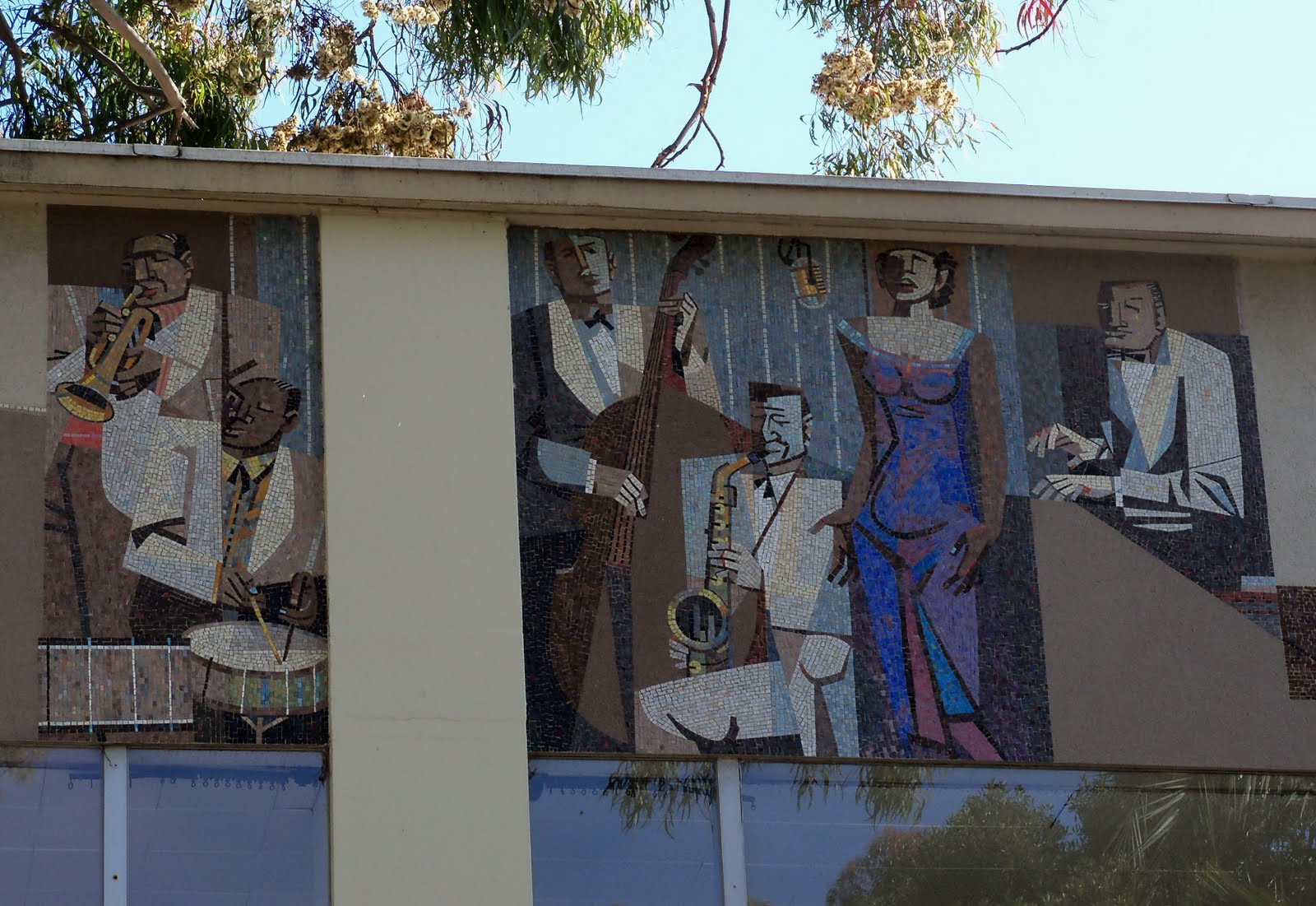
Richard Haines, Schoenberg Hall, UCLA. Photo courtesy of http://historylosangeles.blogspot.com/2010/04/schoenberg-hall-ucla.html
Beyond the design and the fabrication, the universalized themes of “Celebration of our Homeland” and “Recognition of all Foreign Lands” also contributes to that rather blah feel—perhaps a demonstration of the way, in the early 1960s, a government commission could be more limiting than work with a financial institution, despite the risk-averse and “conservative” nature of each. (For comparison, these mosaics appeared at that time at the downtown Home Savings branch—and Sheets’s tile mosaics for City Hall East are vibrant visions of a universalized theme. More on them one of these weeks.)
The mosaic depicts many symbols of justice and harmony, showing two hemispheres, flowering trees, small images of animals and industry—and then collections of white-robed people, carrying gifts and tools. Though perhaps no more than one is holding an overtly religious symbol, the sense of a procession and of communal action in white robes is as evocative of a choir and a baptism as much as the Parthenon frieze or the art and architecture of the United Nations. But perhaps evocative is the key word–no explicit religious symbols, and hence no controversy?
Back next week to Sheets and Home Savings.
Home Savings on the California Landscape

California Home Savings locations on the landscape, Home Savings calendar, 1978. Courtesy of George Underwood.
As the semester revs up, longer and shorter posts will be alternating here, on somewhat of a regular schedule. Today, a short one, as a postscript to recent posts on the use of maps by Home Savings to connect to customers in Illinois, Missouri, New York, and other new states with branches in the 1980s.
Here Home Savings is put on the map of California, its home state — but in a very different format. This is from a calendar, rather than a road map, and that probably helps — the size of the state and the number of branches might overwhelm the other format (though I hear one exists).
While the eastern maps emphasize the convenience along the roads, here Home Savings is represented on a natural-resources map of California–emphasizing, in an even more dramatic way, the history and rootedness Home Savings strove for.
Here it seems the savings and loans are literally as old as the hills, and as permanent on the California landscape as the Sierras, the Mojave desert, and the Central Valley. (And how great it would be if those blue regional dividing lines were rivers instead!)
More in the weeks ahead about that Home Savings shield in the bottom left corner.
Spring 2016: Do you have any Sheets Studio or Home Savings images?

Home Savings and Loan mosaic from expansion of the Encino branch with segment tags, laid out on the Sheets Studio floor, 1977. Courtesy of Brian Worley.
Hello again! After wonderful and encouraging events last month in San Francisco and this month at the Columbia University Seminar on The City, I am happy to report that I have serious interest from a few publishers, as well as some conversations ongoing with museums about an exhibition.
A history of the collaboration between the Millard Sheets Studio and Home Savings and Loan, studded more than one hundred color images and beautifully designed, is on its way!
My target publication date is Fall 2017, in time for your holiday purchases. What that means is, between now and July 1, I will be gathering the very best images–archival or taken yesterday–for every building, angle, process, or detail I would like to include. I will also be revising what I have written with the goal of entering production this fall.
If you have places I should speak, or media outlets I should alert, let me know — I can add them to my planning list. But, for now, think if you have an image you haven’t seen on the blog, or that might not be in the Millard Sheets, Denis O’Connor, or Home Savings archives. I would love to know about it, and if we can create a high-resolution digital scan and include it, I will credit you as my source in the final publication.
Please be in touch, and I will provide an update once the images are assembled and the text is honed.
